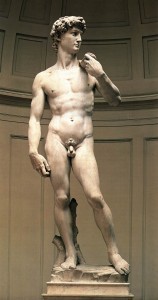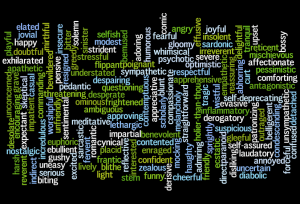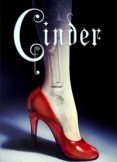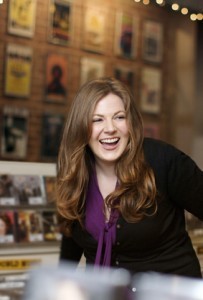Ginger Rue's Blog, page 6
October 4, 2014
To Tell the Truth, Part Two
Recently, I blogged about the importance of telling the truth in fiction. But what about nonfiction? If you’re telling a true story–unless you’re purposely fabricating something or trying to distort the facts–the truth takes care of itself, right?
Not necessarily.
As a magazine writer, I’ve interviewed people about all sorts of different subjects. Sometimes I’m just trying to condense the facts into the word count my editor needs–no easy task when you have a mere 800 words and the story is about why someone committed suicide or died accidentally. When I wrote true stories for Seventeen, I would generally have page after page of transcript but would have to carefully choose the parts of the story that got to the heart of what happened. I always felt a little sad that I couldn’t fully explain all the nuances that added to the story, but that’s just part of the job.
Other times, it’s not so much the facts of the story, the what happened, as it is the personal impact those instances had. That’s one reason I enjoy being a contributing editor for Guideposts, which tells “true stories of hope and inspiration” (that’s their tagline). All Guideposts stories have one goal: to show the growth and change of the narrator. What makes this so interesting and so rewarding is that often, when helping people tell their Guideposts story, you help them find the meaning in what happened…you help them see how they grew from it. Oftentimes I’ve listened to someone tell his/her story, and I’ve asked, “So would it be fair to say that because of this, you [changed/grew in x way]?” It’s nice hear the happy surprise in their voice when they respond, “Yeah. I’d never thought about it that way, but you’re absolutely right.” Sometimes you’re just telling them what they’ve told you, but in an abbreviated form that distills the facts to get to the truth. It’s pretty neat.
That’s a big part of getting at the truth–whether it’s a spiritual truth or just the facts: cutting away the parts that don’t matter. Once, I interviewed someone for a women’s magazine about a health issue, and she told me in great detail all about another health issue of hers that had nothing to do with the article I was writing. I really don’t think she could see why all of that was irrelevant. At Guideposts, they call this kind of cutting away “marble shaping”: it’s based on the legend that when Michelangelo was carving his David sculpture, he told someone as he was chipping away at his big hunk of marble that he was “getting rid of everything that wasn’t David.”
It’s a great comparison to writing, but it’s hard to do. Guideposts editor Rick Hamlin recently reminded me not to work too hard to make my stories lean and mean–because details are nice, too. “It is possible to carve away so much marble that there’s hardly any David left!” Rick said. Good advice. Striking the right balance on how much to cut and how much to leave in? That’s telling the truth. It’s not easy, but I suppose that’s just another reason that writing is an art, not a science.
September 25, 2014
Those Easy Creative Writing Courses
In college, I minored in creative writing.
Most of the people in my poetry writing courses loved words and wanted to learn a few things about poetry, even if they didn’t aspire to be poets.
Inevitably, though, there was always at least one of those “the cat sat on the mat” guys–people who thought a class on poetry writing was a big joke and an easy A. You know the type. I don’t know what kinds of final grades they got, but I do know that many of them had the “Oh, no! What have I done?” moment…especially if the teacher was a professor named Tom.
I won’t put his full name here because, even though he’s won lots of prizes and published lots of poetry books and has been anthologized and gotten all sorts of attention as a poet, I know he would hate my mentioning him on the internet, of all places. But Tom was one of the most brilliant teachers I ever had, and I learned more from him in a few poetry workshops than I learned in most of my other classes combined. (The teacher from my last blog post who told me, “You’re not telling the truth“? That was Tom.)
Where to begin with what I learned from Tom’s classes? First, fearlessness. He’d assign us to write a poem each week, make copies for all the other students, and then read our poem aloud to the class. The horror! I thought I would die of embarrassment. But I didn’t. I read aloud my deepest feelings and viewpoints to a roomful of (sometimes smirking) strangers, and I survived. Not much about public speaking has phased me since then (I think I could now address a joint session of Congress without breaking a sweat). And when I became a teacher myself, it was downright difficult–if not impossible–for my students to rattle my cage with an inappropriate comment. (Hey, once you’ve heard a roomful of poets’ deepest feelings, you’re pretty jaded for the rest of your life. You CANNOT unlearn a poet’s deepest feelings!)
I also learned from Tom’s class not to take myself too seriously. Tom was famous around the English department for his unbridled laugh. He was never mean, but when he found something funny about your work, he’d share his observation, and it was always spot-on hilarious. I remember once writing a persona poem from the perspective of a middle-aged woman who’d had a rough life. After I read it, Tom said, “This sounds like a country-western song.” Then he let out that wonderful laugh, and I laughed right along with him because, you know what? It did sound like a country-western song! And I loved that he had no qualms about telling me that. That’s another thing I learned from him–the power of praise. Tom didn’t sugarcoat anything: if a poem was bad, he’d offhandedly say, “Not your best work this week” and move on. He didn’t give out praise easily, so when he did, it meant something. I will never forget one day when he said of a poem of mine, “I have no marks on this page. Don’t change a thing.” It was a moment I will always hold dear.
In schools today, it’s hard to justify creative writing classes. They’re a good place to make budget cuts. These classes offer no way to “teach to the test” or cram a set of information into students’ brains. The best creative writing classes flow where they will based on student work. Many of my favorite poems to this day are ones I read in Tom’s class. He didn’t have a syllabus with required readings; he’d just say, “This poem reminds me of something by Roethke–let’s take a look,” and there we’d go. It’s funny: in college, I memorized dozens of different types of rocks and their properties for geology; back then I could’ve told you in which year which king died in which battle; I could solve for x (but not well, of course–I was an English major!). I can’t remember any of that stuff now–that concrete, useful knowledge that a well-educated person ought to know.
But I can still quote the first few lines of “Dolor” from memory and still get the same chills I got the first day I read it in Tom’s class.
So glad I took that crip course. So glad Tom was my teacher.
September 22, 2014
To Tell The Truth
Lying: It’s a great way to ruin your life. It’s also a pretty good way to ruin your writing.
Sounds a bit hypocritical for a fiction writer to caution against lying, doesn’t it? After all, we make things up for a living. We create people in our heads, name them, imagine what they look like and what they eat for breakfast, what their worst fears and deepest desires are, and then we try to convince readers that they’re real. And yet, in the midst of all this make believe, our job is to get at the truth.
What does that mean for a writer? It means that even though our characters are imaginary, their experiences, their human nature, must at the core be true and real.
A writing teacher of mine once called me out in his class because my character was too…I don’t remember what. Noble? Selfless? Whatever it was, the character was lying to himself and to the reader, and as a result, the piece just didn’t work. “You’re not telling the truth,” my teacher said. And he was right.
Sometimes in real life, we don’t want to tell the truth because it’s painful. Admitting how we really feel or what we’ve really done can be humiliating for us or devastating for someone we’ve hurt. Same thing in writing. There are places I’ve not wanted to go, boxes I’ve wanted to leave unopened because it’s true that the truth hurts. When you allow your characters to have embarrassing flaws or do something that scares them (and you!), that’s when they become vulnerable. And vulnerability makes them interesting…and real.
I once told a 12th-grade AP English class that the greatest characters in the greatest literature were people who were flawed and that it was their imperfection that made them relatable and interesting because whether we want to admit it or not, we’re like them. I asked them to try to name a perfect character who was still interesting and likable, and a hand immediately shot up. “What about Jesus?”
*mic drop*
OK, so maybe I was wrong. But hey, nobody’s perfect. Except, of course, Jesus. 
September 9, 2014
Should You Be Friends with a Writer?
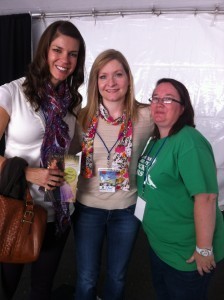
With writer friends Lindsey Leavitt and Crystal Perkins. Sure, we LOOK harmless enough…
Writers are interesting human beings. Most of them are creative, and some of them can tell hilarious stories at parties. Many have an innate understanding of what makes people tick. And if you want someone to deconstruct every minute detail of what your crush’s text really means, we’re usually SO up for that. Overanalyzing language and reading between the lines? Yes, please!
On the other hand, being friends with a writer has its downsides. When my husband introduces me to someone new, he often jokes, “She’s a writer, so be careful what you say around her; she’s liable to use it in a book.” He’s only partly kidding. Some of my favorite lines in my books were ripped from real life. For example, in Brand-New Emily, my protagonist calls an annoying old guy, “man with one foot in the grave.” That line came from my brother, probably a decade and a half before Emily was published. When Glenn was a young, up-and-coming advertising exec, an older man he worked with frequently referred to him as “young fella” in meetings. My guess is it was a passive aggressive way to remind Glenn of his lack of experience–probably because Glenn is ridiculously talented and the guy was afraid he’d show him up. Glenn got so sick of it that one day he told me, “If he says, ‘Right, young fella?’ to me one more time, I’m going to say, ‘Sure thing, man with one foot in the grave!’” I thought it was such a funny line that I stored it away and made Emily the quick-witted wisecracker who uttered that line. (Thanks, Glenn!)
Another thing to consider about being friends with a writer? You might think you want them to write about you. Every so often, someone asks me, “Will you put me in your next book?” That would be kinda cool, right? Maybe, maybe not. A writer friend might use something about you—your name, a personality trait, the shape of your weird birthmark—for a character, but not necessarily in a flattering way. We’re kind of horrible friends in that regard. For instance, I got the name for the antagonist in Emily from a friend at work. Luckily, the real-life Heatherly is a peach and thought that having a mean fictional girl as her namesake was a total hoot. Of course, I meant no ill will, but doesn’t the name Heatherly just scream popularity? I saw it in the window and had to have it.
More recently, my agent counseled me that a villain of mine needed to be more complex. “Show us a side of him that’s irresistible,” she said. So I modeled this irresistible side of him after a man I absolutely adored, who shaped my life immeasurably with his kindness and generosity of spirit. Yep. That’s the thanks he gets. All his awesomeness is now my villain’s. How’s that for gratitude? I feel sort of bad about it, but not bad enough not to do it. It’s just the kind of thing writers do.
With all this in mind, it’s not really surprising that so many great writers absolutely couldn’t stand other writers. That’s an interesting topic in and of itself. If you’d like to know more about some famous literary feuds (including Mark Twain’s scorching burn on Jane Austen—ouch!), click here.
September 4, 2014
Writing Instruction: Tone and Mood
When I was a teacher, it was difficult to get students to understand the difference between tone and mood. It’s understandable: tone and diction are what create mood, so without tone, mood doesn’t even exist. Diction, of course, is the writer’s word choice, while tone is defined by most dictionaries as “the manner in which a writer approaches the subject at hand.” Mood, then, is the feeling evoked in the reader based on the author’s choice of words and his/her tone. It’s a cause and effect relationship. Still, though, these definitions in and of themselves fall short of having any real meaning to students, which is why, when a splendid example of tone and mood comes along, it’s a great opportunity to show instead of tell.
The other day, syndicated columnist Jae-Ha Kim produced a most instructive piece of writing for illuminating tone and mood. If you want a wonderful lesson for your writing class, have them read Jae’s blog post called, “JiSun: Do You Remember My Sister?” While most textbook examples of tone are merely “sad” or “happy,” Jae’s tone here could best be defined as confrontational or angry–probably a lot more interesting to study. Ask your students how she accomplishes that tone. Have them notice how beginning the piece with a direct address immediately points a finger in the offender’s face. Ask them how that beginning serves the piece differently than if she’d begun, “Once there was a girl who was mean to my sister.” Have them notice the series of one-sentence paragraphs with parallel construction, each beginning with the same word, “maybe.” Ask them to sum up the message to JiSun in one or two sentences. (My take? “My sister’s over it, but my mom and I aren’t. Watch your back.”) What you’re teaching them, then, isn’t just a fuzzy definition of tone, but rather how tone is constructed by the choices the writer makes.
Ask them how they feel after reading the piece. My guess is that they will feel unsettled. And why? Because the writer’s control of tone CAUSED that reaction. Tone CAUSES mood.
Finally, for a fun and educational writing exercise, ask students to write a reply from JiSun’s point of view. After all these years, is she defiant or remorseful? Their use of tone will make it clear who JiSun grew up to be.
August 30, 2014
MOMS’ NIGHT OUT Would Make a Great Moms’ Night In

I hope I didn’t injure the other members of the press when I trampled them in order to stand next to Patricia Heaton in this photo. LURVE Patricia Heaton!
Just got an email yesterday that the movie Moms’ Night Out is releasing on DVD. Such a fun movie! I had the opportunity to meet the cast and interview the lovely Sarah Drew during filming–you can read her inspiring story here. At the time, I wasn’t a completely sucked-in uber-fan of The Middle, which is probably good because if I had been, I might have screamed, “I love you, Frankie Heck!” and tried to hug Patricia Heaton. Probably not the most professional of moves, right? (But how could you not love Patricia Heaton? She’s HI-larious!…Now, lower your head and whisper “HI-larious,” Brick-style.) Here are a few pics from the set. If you’re a mom, I urge you to gather some of your other mom friends and have a Moms’ Night Out movie night. You’ll love it. It will make you laugh, cry, and feel really, really good about the AMAZING job you are doing!
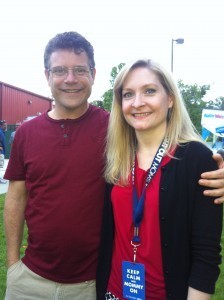
Hanging with Samwise
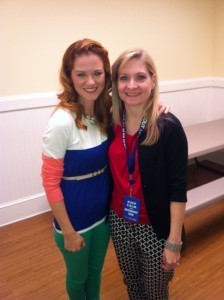
Never stand next to anyone as gorgeous as Sarah Drew in a photo if you can help it!
June 17, 2013
What I Like about You: Marissa Meyer
Marissa Meyer, author of Cinder and Scarlet, tells us how she came up with the original and extremely popular Lunar Chronicles. Enjoy!
How did you get the idea for Cinder?
MM: I entered a writing contest a few years ago in which the host had listed about ten random prompts and writers had to choose two of them to include in their stories. My two prompts: set it in the future and include a fairy-tale character. My contest entry was a sci-fi version of “Puss in Boots” and I had so much fun writing it that I thought I would try to do an entire series of sci-fi fairy tales! (The ironic part of that story is that only two stories were submitted for the contest—and mine came in second. Ha!)
A couple months after that I was drifting off to sleep when the lightning bolt struck: Cinderella… as a cyborg! I crawled out of bed and spent about an hour brainstorming and jotting notes. That initial flood of inspiration eventually turned into Cinder and The Lunar Chronicles.
Even though your novel is based on the story of Cinderella, you did a lot of twists that were different from the original story–for example, Cinder having to use an old cyborg foot to go to the ball and losing it instead of leaving her shoe behind. How did you decide when to deviate from the original fairy tale and when to stick closer to it?
MM: It was a lot of fun for me trying to figure out how close I wanted to stick to the story, versus how much of my own spin to give it. I started by making a very skeletal outline of what, to me, are the most iconic moments and elements of the Cinderella storyline – the girl treated like a servant, the pumpkin carriage, the ball, the slipper – and then brainstormed ways to futurize them. I also knew early on that this would be a multi-book series that would tell other fairy tales along the way, so I tried to weave in elements of many of them as early on as possible. For example, in Cinder we’re introduced to a new breed of wolf-like soldier that the evil queen is developing. It’s only hinted at in the first book, but those wolves become very important in Scarlet, Book 2, which is based on Little Red Riding Hood.
Prince Kai and Cinder are already falling for each other well before the ball. Their relationship is more complex than the fairy tale’s “love at first sight” at the ball. What made you decide to develop the relationship the way you did? (Or why did you think it was important to do it the way you did?)
MM: As much as I love fairy tales, I’ve always had a problem with the love-at-first-sight trope that’s so frequently used in them. I just don’t think it’s realistic to meet a guy at a ball, or be awoken from a curse, or whatever it is, and instantly fall in love and go live happily ever after. Relationships take time to build and strengthen, and I wanted the romances in these books to have strong foundations – and also to have to go through plenty of trials and tribulations along the way. I think it makes for a much more interesting story, and hopefully a much bigger pay-off in the end.
You made one of the stepsisters likeable and Cinder’s friend. Why did you decide to do that instead of having the usual “two wicked stepsisters”? How do you think that helped your story?
MM: In the first few drafts of Cinder, both stepsisters were “wicked” and didn’t get along with Cinder. However, there’s a scene in the book in which something pretty awful happens to one of the stepsisters (I say, trying not to give any spoilers!). After reading it, one of my early readers told me that she wasn’t at all upset by this scene that was supposed to carry a big emotional impact. She didn’t like the stepsister so why should she care if something bad happened to her? So I decided to go back and change it so that the stepsister was bubbly and vivacious and one of the few people who cared about Cinder – I want readers to feel as if she’s their younger sister, too.
Did you write the whole novel before you sold it to a publisher? And if so, how did you know you could end it with a cliffhanger? How did you know you’d be able to have a sequel to finish Cinder’s story?
MM: Yes, the novel was completed upon selling it to my publisher, and by that point I also had early drafts written of Books 2 and 3 and an outline of Book 4, so that when we were showing it to publishers I could give them a good idea of where the story was heading and why I’d chosen to end it on a cliffhanger. My idea for this series was always much bigger than could fit into a single novel and it was important to me that my publisher understood where I was taking it and supported my plans for the series. Luckily, Macmillan loved the concept and didn’t give me much trouble about the cliffhanger! I know it was the right decision for the story.
Thanks, Marissa!
January 23, 2013
What I Like about You: Elizabeth Eulberg
I’m always so impressed when a writer can take a classic story and make it meaningful for today’s teens. A lot of great old stories have been recycled in the past several years, but not always well. Elizabeth Eulberg‘s Prom and Prejudice, however, is a fun, page-turning take on the beloved Pride and Prejudice. The best part about it is that a girl could read Eulberg’s novel without having read the original and still enjoy a wonderful story. (She’d probably love it so much she’d want to read Austen’s immediately afterward.) But for Austen fans, it’s fun to see how Eulberg reworks the original to make it new and relevant to a modern teen audience. I seriously couldn’t put it down and had the dark circles under my eyes to prove it! Teachers, it’s safe for your reading list–nothing objectionable for parents to fret over. Lots of fun, with good chemistry between the protagonist and the love interest. Eulberg’s newest, Revenge of the Girl with the Great Personality, comes out this March. (Props for the irresistible title!)
December 14, 2012
What I Like about You: Kieran Scott
A good storyteller makes you care about characters who, in real life, might not interest you or cause you to feel connected to them. A good storyteller makes you care about these characters’ problems whether or not they’re the sort of problems you would normally care about.
Enter Kieran Scott. I first heard about her novel I Was a Non-Blonde Cheerleader several years ago, but it was only recently that I had a chance to pick it up. I had immediately loved the title (I’m terrible at creating titles, so I admire a catchy one) but didn’t think I’d be too into the book…cheerleading was never exactly in the cards for me. When I was about twelve, my own dad ironically nicknamed me “Grace,” based on my unerring ability to routinely hurl myself into stationary objects for no good reason. (But how cool that my dad taught me the valuable skill of being able to laugh at myself. That one has come in handy more times than the ability to do a back flip, I’m sure!) Growing up, I didn’t think cheerleaders had “real” problems; I would have scoffed at the suggestion that they ever worried about fitting in like the rest of us did. So, I was all set to be immune to the charms of Kieran’s main character, Annisa, who is a short-haired brunette trying to fit in with the blonde Britney lookalikes at her new school.
But you know what? I’ve got to hand it to Kieran…it wasn’t long before I actually really, really hoped the squad would accept Annisa and that they’d ace their competition and all end up great friends. Go figure! I can chalk my reaction up only to Kieran’s skill as a storyteller. She made me care, and I enjoyed the book. Fellow writers, read and learn. Give your readers a reason to relate to your protagonist, and we’ll follow him/her anywhere. Even to cheerleading competition!
What do YOU think about Kieran Scott’s novels? Has anyone checked out the He’s So/She’s So trilogy? On my list….
December 5, 2012
What I Like about You: Lindsey Leavitt
For some time now, traditional princess stories have been under fire: they teach girls to be helpless and wait until their prince comes to rescue them, they give girls unrealistic ideas about love, etc. Yeah, I get that. But here’s what I also get: an awful lot of girls like princess stories. I mean really, really like them. Maybe it’s the pretty dresses; who knows? But something about princesses resonates with many girl readers. Lindsey Leavitt, in her Princess for Hire series, pretty much gives us the best of both worlds: her protagonist, a substitute princess, gets to enjoy the fun of being royal, but she also addresses the pitfalls. It’s win/win.
What I like about Lindsey is that she’s not afraid to be fun, fizzy, and light. A lot of agents and editors push authors to be edgy and gritty, but a good story is still a good story. My own daughters absolutely loved the Princess series, and my middle school students were big fans of Sean Griswold’s Head.
And on a personal note, like Irene Latham, Lindsey is a friend to other writers. She’s smart, encouraging, and upbeat…a lot like her work.
So, if you’re looking for a nice series for that daughter/niece/etc. for Christmas, consider Lindsey’s Princess books. Perfect for elementary and middle grade girls. The covers are so gorgeous, you’re sure to get a squeal or two when they unwrap your gift.

